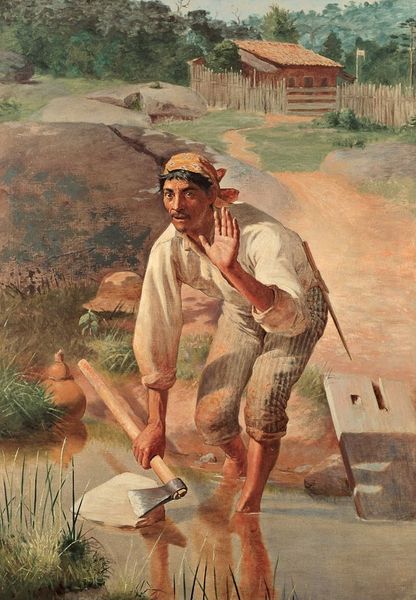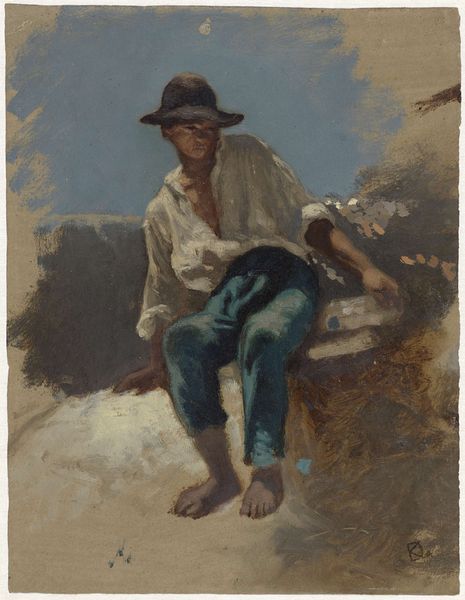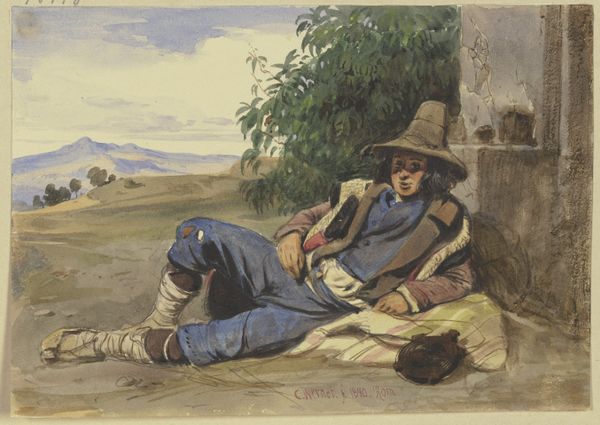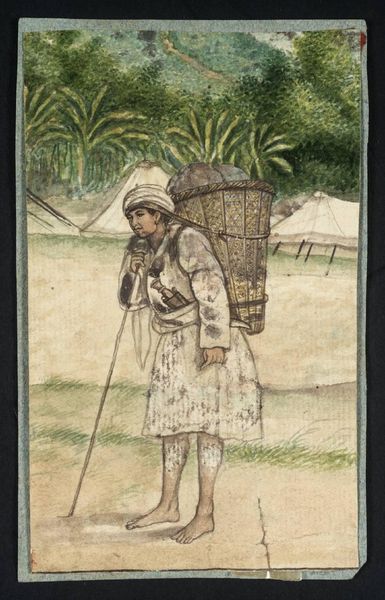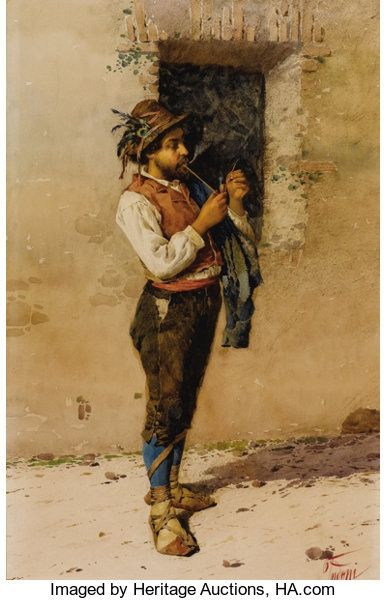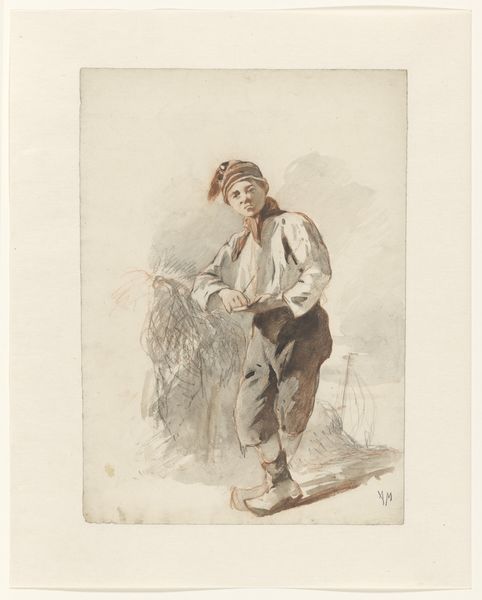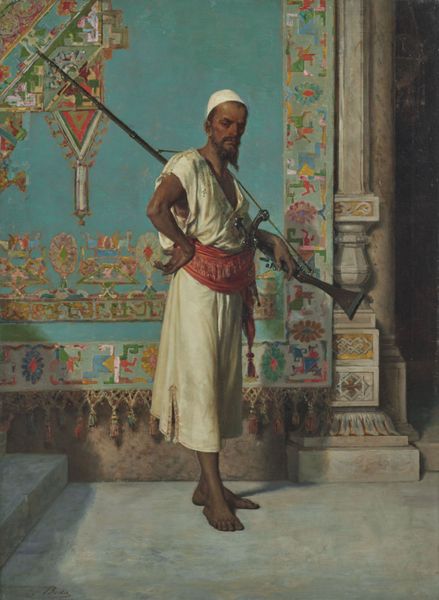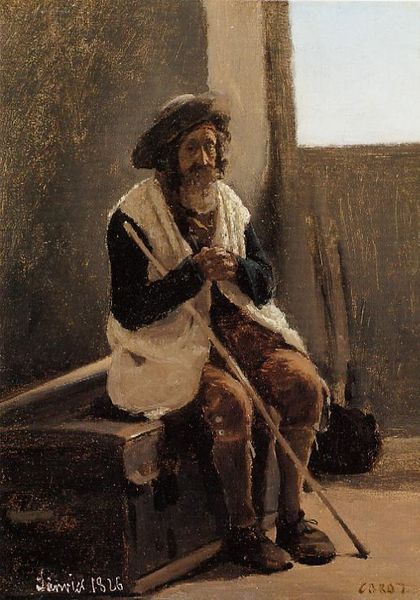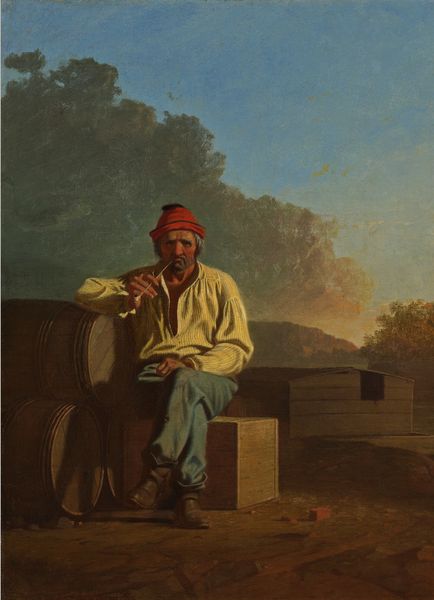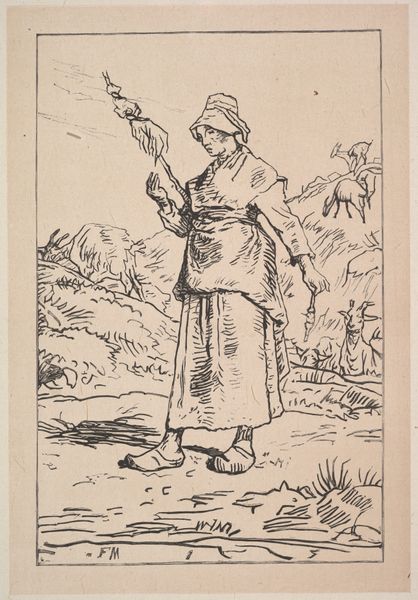
painting, plein-air, paper, watercolor, canvas
#
portrait
#
gouache
#
painting
#
plein-air
#
landscape
#
charcoal drawing
#
paper
#
oil painting
#
watercolor
#
canvas
#
coloured pencil
#
romanticism
#
watercolour illustration
#
genre-painting
#
watercolor
#
realism
Dimensions: 25.5 cm (height) x 19.5 cm (width) (Netto)
Curator: Allow me to introduce "A Shepherd Boy. Pompeii," created around 1838 by Constantin Hansen. It resides here at the SMK, Statens Museum for Kunst. Editor: Right away, there's this relaxed atmosphere; the sleepy afternoon light drenching everything. The composition's got this quiet simplicity to it, almost like a stage set for a single, poignant moment. Curator: Precisely. Hansen was deeply influenced by the Neoclassical ideals, seeking authenticity by painting en plein air, or outdoors. This gives the landscape a sense of immediacy and lived experience. The boy becomes more than a model; he is part of the environment. Notice the staff, it is as though he is holding a scepter. He is master of this small, bucolic domain. Editor: Yes, but there's something subtly melancholic in his gaze, a kind of resignation that goes beyond mere pastoral bliss. He's not just a shepherd; he seems to embody a certain historical weight, doesn’t he? Those rough, earthy tones add to the somber feel. Like he’s been standing there forever. Curator: Perhaps that "weight" you sense is the echo of Pompeii itself. Hansen painted this while visiting the excavated city, where the past is always palpably present. It's not merely genre-painting; it’s a meditation on history, on the cyclical nature of life and the enduring spirit of humanity even amid ruins. The bare feet are like an intimate tie to the earth. Editor: You're right. It makes me think about all the invisible stories underfoot, the lives that echo from those stones. The innocence in the subject’s youth, set against the aged backdrop… it's quietly devastating. I like how his clothes seem both functional and almost ceremonial, a link to ancient robes and simple living. It captures something universally human. Curator: Absolutely, there’s a deliberate attempt here to link a specific time and place – Pompeii in the 19th century – with broader, timeless themes of humanity's connection to nature and history. Hansen encourages us to seek meaning within what may at first seem like just a pastoral scene. Editor: Looking closer, there's an almost photographic realism blending with romantic idealism, It’s intriguing and gives me lots to think about! Curator: Indeed!
Comments
No comments
Be the first to comment and join the conversation on the ultimate creative platform.


